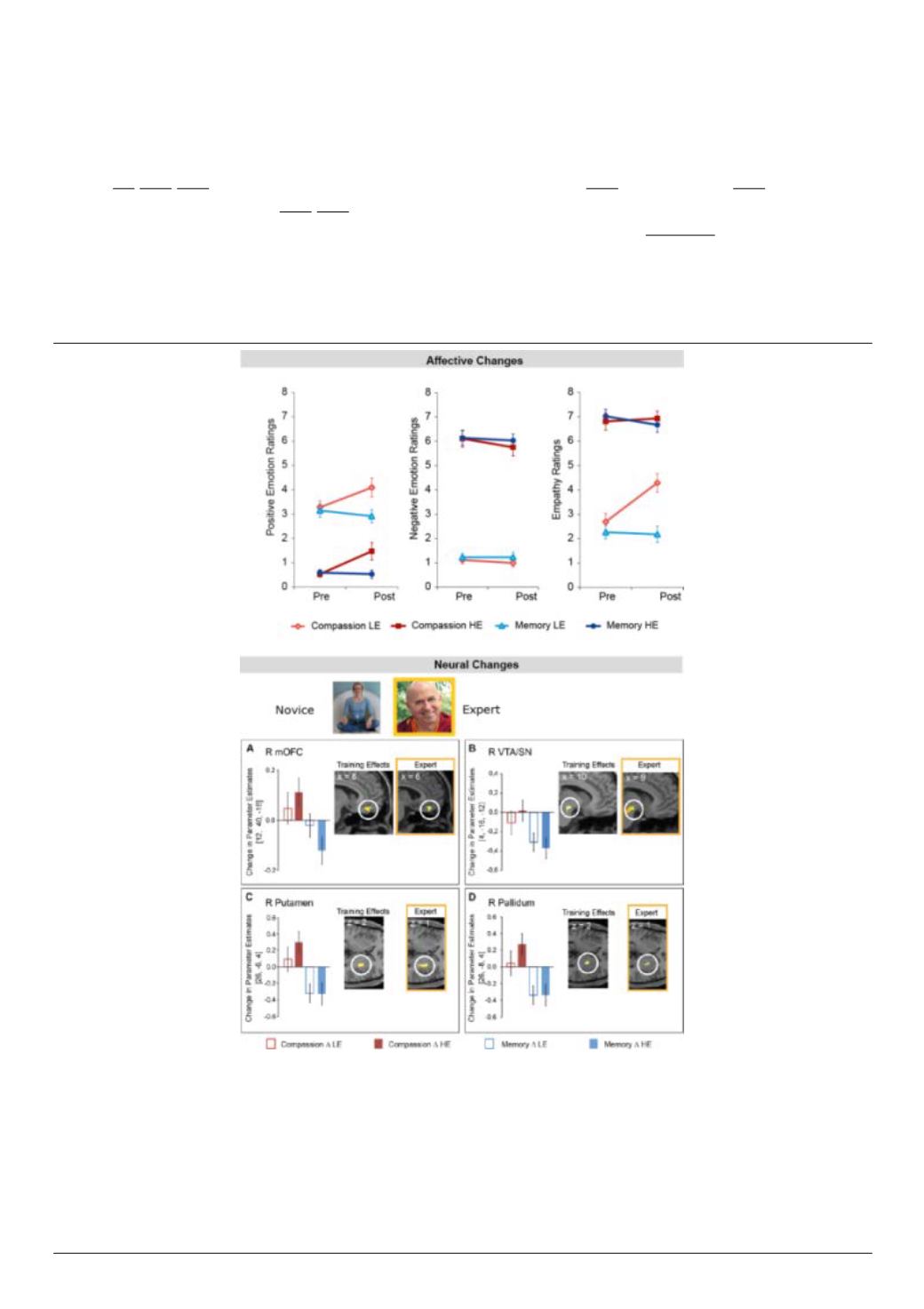
the wonderful, fulfilling feeling of wishing others well; and a feeling of happiness that arises”. At the
same time, compassion training did not decrease negative affect, which might be a prerequisite for
helping behavior: realizing that someone is in need is a necessary first step to taking appropriate
action. On the neural level, we observed that compassion training, but not memory training,
increased activations in a network previously observed in cross-sectional compassion
studies
and in brain regions related to positive affect
and affiliation
as well as
maternal and romantic love
This network spans the medial orbitofrontal cortex, the
putamen and pallidum and the ventral tegmental area/substantia nigra (
). Importantly,
compassion-related activations in this network were also observed in two other compassion
training studies and in the expert practitioner Matthieu Ricard when he immersed himself in
different compassionate states (loving-kindness, compassion for suffering and unconditional
compassion).
Figure 5.
Effects of compassion training.
(Upper Panel)
Self-report changes related to compassion training (red) and
memory training (blue). Compassion training, but not memory training, increased self-reported positive affect in
response to videos showing people in distress (high emotion, HE) and to videos showing people in everyday life
situations (low emotion, LE). No changes were observed for negative affect ratings. Compassion training also increased
empathy ratings for LE videos.
(Lower Panel)
Neural activation changes in response to others suffering (HE videos)
induced through compassion training occurred in (A) the right medial orbitofrontal cortex, mOFC, (B) the right ventral
tegmental area/substantia nigra, VTA/SN, (C) the right pallidum and (D) the right putamen. Bar charts show the
change in parameter estimates for the training groups in the depicted independent region of interest; error bars denote
the standard errors of the mean. Orange boxes show neural activations of an expert practitioner immersed in three
283
compassionate states to a high as compared to a low degree. (Klimecki et al., 2012, with permission)


